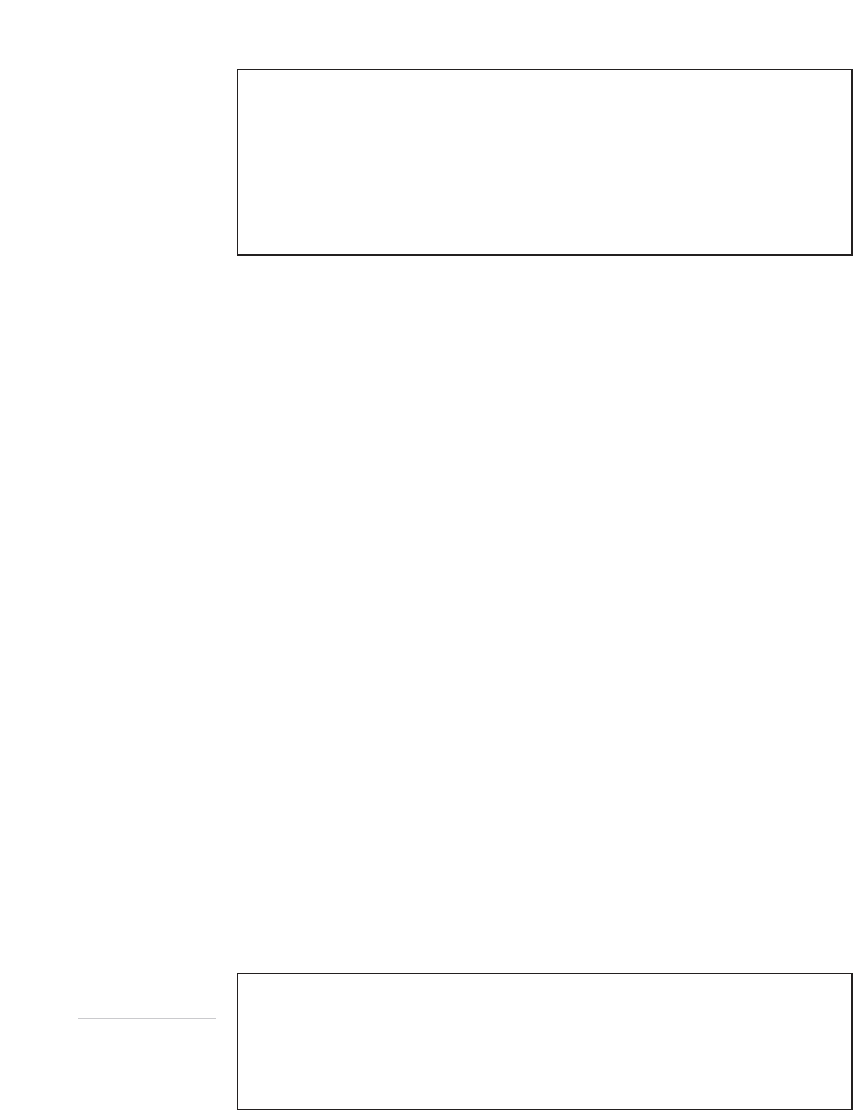HTML and CSS Reference
In-Depth Information
CAUTION
When you're using
while
loops, avoid creating infinite loops. This
means that you must manipulate one of the values in the looping
condition within the body of your loop. If you do manage to create
an endless loop, about the only option you have is to shut down
the web browser. If you're going to iterate a specific number of
times using a counter, it's usually best to just use a
for
loop.
Functions
Functions
are a means of grouping code together so that it can be called whenever you
like. To create a function, you declare it. The following code includes a function declara-
tion:
<script language=”JavaScript”>
function writeParagraph(myString) {
document.write(“<p>” + myString + “</p>”);
}
</script>
A function declaration consists of the
function
keyword, a function name, a list of para-
meters the function accepts (in parentheses), and the body of the function (enclosed in
curly braces). This function is named
writeParagraph
and accepts a single parameter,
myString
. Function parameters are variables that are accessible within the body of the
function. As you can see, this function prints out the value passed in as an argument
inside a
<p>
tag. After I've declared this function, I can then use the following code later
in the page:
<script language=”JavaScript”>
writeParagraph(“This is my paragraph.”);
</script>
It will produce the output:
<p>This is my paragraph.</p>
NOTE
When it comes to the values passed to functions, you'll see them
referred to as
parameters
or as
arguments
. Technically, the vari-
ables listed in the function declaration are parameters, and the
values passed to the function when it is called are arguments.

